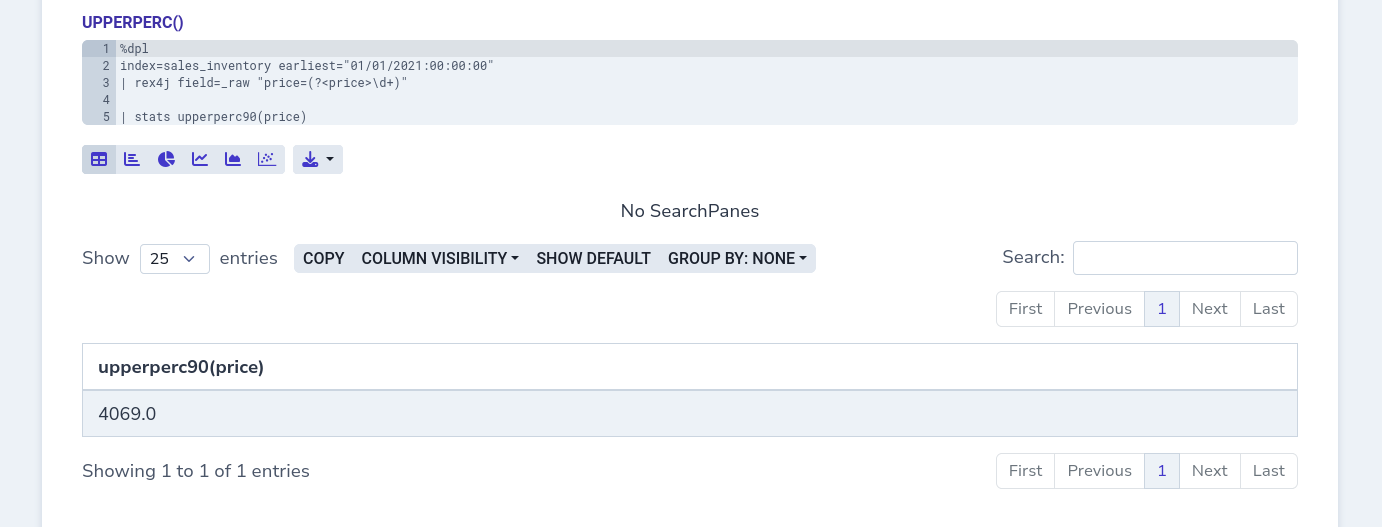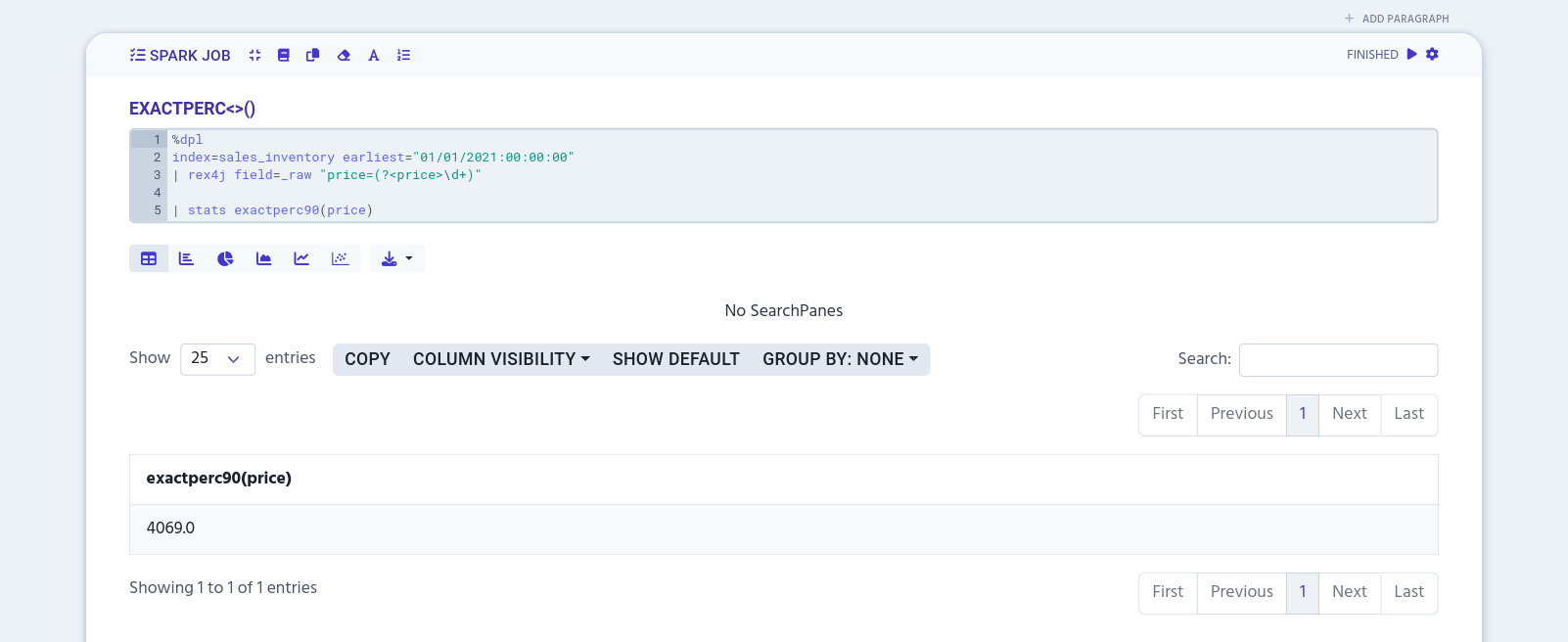perc(), upperperc() and exactperc()
Definition
perc(), upperperc() and exactperc() return the percentile value of the selected numeric table column.
| Command | Description |
|---|---|
|
Returns a value that represents the threshold of approximate values for the given percentile. |
|
Returns the approximate upper bound for given percentile when there are more than 1000 values in the column. If there are less than 1000 values available, |
|
Returns the exact percentile value. |
|
The |
You can use perc(), upperperc() and exactperc() with transform commands that support aggregations.
Examples
There are two ways to use perc(), upperperc() and exactperc(): perc(<value>, <percentile>) and perc<percentile>(<value>). Use values between 0 and 100 to define the percentile. The value can be a decimal.
Currently, the format perc(<value>, <percentile>) doesn’t work. See the issue on GitHub.
|
perc()
The following example shows the approximate threshold for price column in sales_inventory index. The query uses percentile 90.
%dpl
index=sales_inventory earliest="01/01/2021:00:00:00"
| rex4j field=_raw "price=(?<price>\d+)"
| stats perc90(price)

